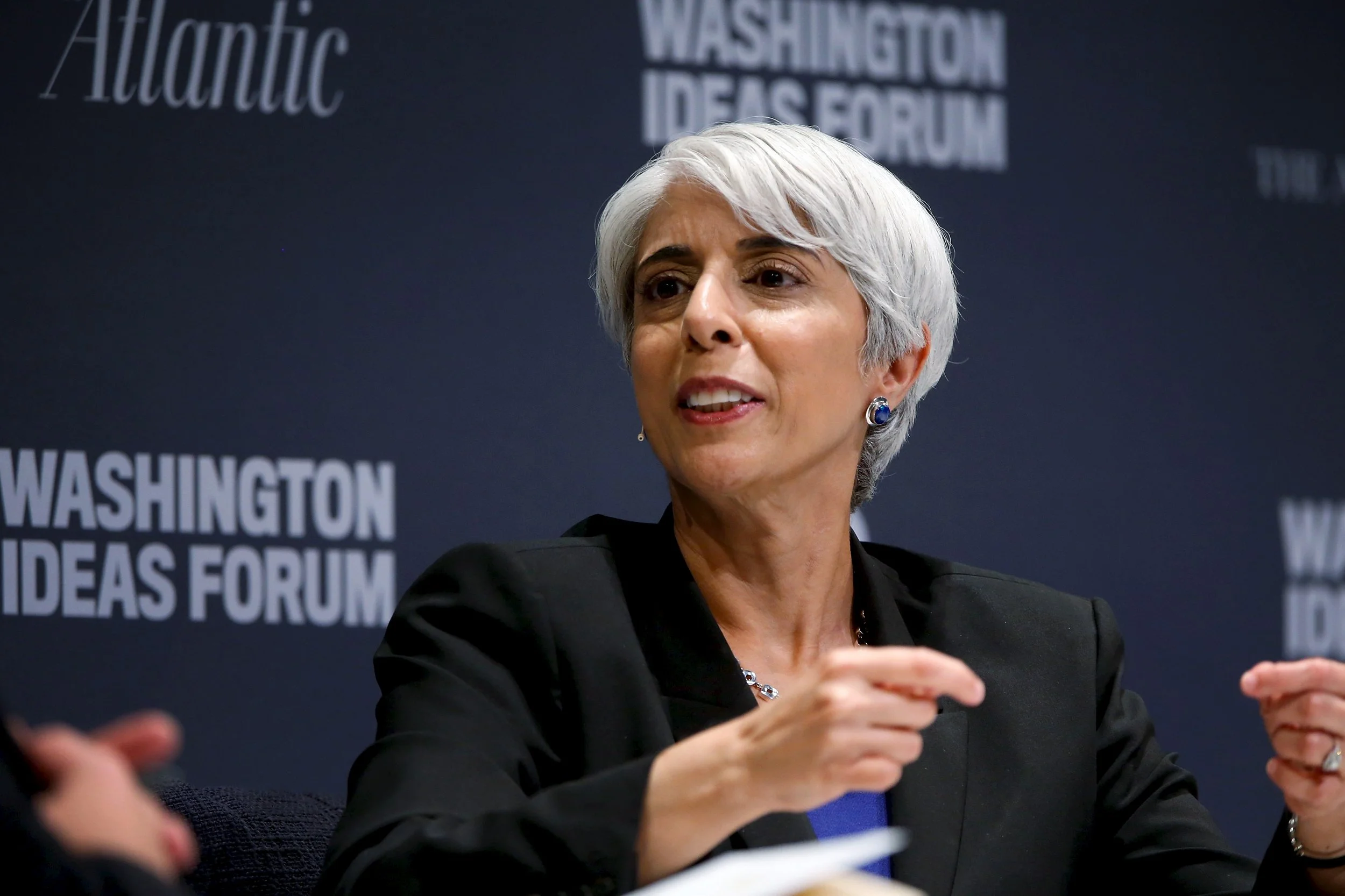The recent dismal results from the National Assessment of Educational Progress introduced a new learning-loss puzzle. It was assumed that states with more remote instruction would have lower academic scores than those with more in-person classes during the pandemic. But states that had more days of in-class learning also saw declines. The likely reason is due to the hidden disruptions to student learning caused by COVID quarantines.
Meet ChatGPT: The AI Chatbot That Can Write Code, Pass Exams, and Generate Business Ideas
Just over a week ago, OpenAI introduced ChatGPT, a cutting-edge artificial intelligence (AI) chatbot that uses a massive dataset to generate human-like responses to text-based inputs. In just five days, the chatbot reached over one million users, a milestone that took Facebook almost a year to achieve when it first launched. As we continue to develop and advance this technology, it will undoubtedly have a significant effect on the future of work and the way we approach tasks and responsibilities. It is important that we carefully consider how we can use AI to its full potential while also mitigating any possible negative effects. By doing so, we can ensure that AI will be a powerful and positive force for change.
A New Apprenticeship Requirement Could Slow Federally Funded Energy Projects
Federal Regulators Should Approve Election Prediction Markets
The US Commodity Futures Trading Commission (CFTC) continues to wrestle with how to best regulate prediction markets. The commission is expected to make a decision as soon as this week on whether the startup Kalshi can offer a market on the outcome of the upcoming midterms. Election prediction markets have proven to be a powerful tool for forecasting elections and are typically more accurate, timely, and complete than conventional methods. Kalshi’s proposal does not pose a risk to the integrity of the US election system. Approving Kalshi’s submission would be a step in the right direction for the commission and promotes the public interest
Why Arati Prabhakar is Uniquely Suited to Lead OSTP
On September 22, the Senate confirmed Arati Prabhakar as White House Office of Science and Technology Policy (OSTP) director, the first woman of color and immigrant to hold the position. Prabhakar is uniquely suited for navigating these challenges. She previously headed the Defense Advanced Research Projects Agency and the National Institute of Standards and Technology. She held several roles in Silicon Valley, including with the early-stage venture firm US Venture Partners, and she recently founded the nonprofit Actuate, which seeks to bring new actors to the table in developing solutions for areas such as climate, health, and trustworthy data. She will be able to draw on that public and private sector experience to shape how agencies stand up these new programs and design the guidelines and rules for new funding streams.
Implementing Federal Innovation Programs: A Road Map for States
An unexpectedly productive Congress has passed the Infrastructure Investment and Jobs Act (IIJA), CHIPS Act, and Inflation Reduction Act (IRA), which aim to improve America’s infrastructure, boost competitiveness with China, and accelerate new climate technologies. Attention now shifts to implementation. State and community leaders should begin work now to prepare for funding competitions on the horizon.
Congress Must Pass Innovation Legislation, Despite Hurdles
Senate leaders are expected to release updated text on a slimmed-down set of bills to bolster the US semiconductor chip industry. The measures will likely include $52 billion in subsidies and an investment tax credit to boost US manufacturing, but the rest of the Bipartisan Innovation Act (BIA) remains in limbo at a time when more urgent action is needed. Strengthening America’s leadership in science and innovation tomorrow will depend on three crucial areas of investments needed today in bolstering semiconductor manufacturing, boosting federal R&D, and addressing the talent gap.
American Space Achievements: Lessons from the Past Year
The past year was filled with incredible technological breakthroughs and moments of inspiration. We should celebrate these achievements, but also use them as a call for continued action to strengthen the pipelines that enable innovation. Federal policymakers and regulators should double down on using public-private partnerships and creating more regulatory room to test and scale innovations. One important element of this work should involve reviewing existing regulatory processes that may need modernization.
Are Federal Broadband Grants Taxable?
Casey Lide of Keller and Heckman recently wrote a blog post warning that federal grant funding might be considered taxable income by the IRS. This unexpected tax liability could severely curtail the impact of federal grant programs designed to expand affordable broadband connectivity and close the digital divide. The Biden administration is weighing available options for using executive authority to exempt these projects, but a better remedy is for Congress to pass a clean and clear extension.
Reset Strategies Now, Prepare for the Future
The rapidly receding Omicron wave of Covid-19 presents a moment to pause and reflect on our pandemic strategy and make needed and, in some cases, long overdue adjustments. This is also the time to prepare for future pandemic risks. As we move forward, it is important for policymakers and health authorities to review which measures have worked, which policies have fallen short, and which actions have produced too little public-health benefit relative to the costs they have imposed on families and, too often, on children.
America’s public schools and non-profits will play a crucial role in resettling Afghan refugees
The U.S. government bears much of the responsibility for the unfolding refugee crisis. Schools must have the resources and support they need to help Afghan families resettle and adjust to their new homes. These families put their lives on the line to advance American interests in Afghanistan. Let’s honor that sacrifice by helping them rebuild their lives here in the U.S.
COVID-19 Will Continue to Disrupt Schools, But We Can Manage It
Some excerpts from my recent piece in Newsweek outlining reasons why we should prepare for a third year of interrupted learning in schools. I then outline five steps we can take to help manage the challenges and uncertainty.
Vaccinating America’s Children Depends on Parents, Not the FDA
The FDA’s approval of Pfizer’s COVID-19 vaccine for 12 to 15-year-olds is an important step in the nation’s path toward herd immunity and for providing an additional layer of protection that will make it easier for teenagers to attend summer camp and in-person schooling in the fall. However, the greatest challenge to getting 17 million teens vaccinated may not be FDA approval but instead parental approval. The Kaiser Family Foundation’s Vaccine Monitor found only 3 in 10 parents say they will get their child vaccinated as soon as a vaccine is available. Nearly 25 percent will wait to see how it’s working, 18 percent will vaccinate only if their child’s school requires it, and 23 percent say they will definitely not get their child vaccinated.
CDC Adds to Growing Body of Research Showing How Schools Can Reopen
It is very likely that we’ve overestimated the risk of sending children back into the classroom and underestimated the consequences of keeping them at home. It’s time to adapt our strategies to better reflect on the lessons learned over the last 10 months. It’s time to safely and responsibly give students the option of coming back to school.
To Reopen Learning, Give Students the Internet
An estimated 21 million Americans lack a high-speed internet connection. More than 1 in 10 students report they don’t have a laptop or desktop at home. And the digital divide is even more prevalent in our most vulnerable communities. The Census Household Pulse Survey showed that, as of June, 15% of black students lacked reliable internet connectivity, and 21% lacked a device at home. Twenty-one percent of low-income children lack the connectivity needed to benefit from either online or hybrid learning.
That’s why it is urgent for Congress to use the next phase of fiscal relief to bridge this divide. Democratic Massachusetts Sen. Ed Markey has proposed $4 billion for the E-rate program, which helps to connect low-income children at home. Republicans, Sen. Roger Wicker of Mississippi and Rep. Greg Walden of Oregon, have issued a Digital Equity Framework that calls on giving students access to broadband to complete their homework remotely as well as expanding broadband access to minority and low-income communities.
In the News
Will Parents Let Their Children Return to Reopened Schools?
On the same day of the White House forum, the nation saw a new single day record of COVID-19 cases and spiking infection numbers across 37 states over the past two weeks. States are busy preparing technical plans for schools, but may be missing the important health issues they must address in order to instill parental trust. Unless leaders quickly respond to these cautious parents, schools will open their doors but children will stay at home.
Reopening Resilient Schools
An essay I wrote for EducationNext describing how we can approach safely reopen schools. I cover what the most recent scientific studies tell us about risks for children as well as if they are super spreaders of COVID-19. Other issues include how to address SEL, academic learning loss, and improving distance learning to provide a better experience for both teachers and students next year.
Here’s How Michigan’s Schools Can Reopen This Fall
This disruption to the school year has created broad academic challenges for students, particularly those most vulnerable before the crisis occurred. Schools may need to extend the school day or year to help students catch up on lost instruction. Michigan should commit now to ensure their assessments are administered in the spring of 2021 to help identify students who need extra help and better target assistance to close learning gaps. They should also commit to providing the social and emotional learning practices needed to help students as they make their way through this new normal.
























